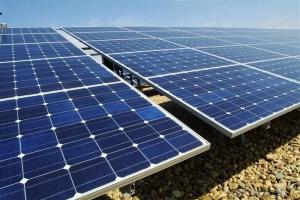265W CNBM Solar Monocrystalline Series (250W—270W)
- Loading Port:
- China main port
- Payment Terms:
- TT OR LC
- Min Order Qty:
- 10000 watt
- Supply Capability:
- 500000 watt/month
OKorder Service Pledge
OKorder Financial Service
You Might Also Like
Item specifice
CNBM Solar Monocrystalline Series III (250W—260W)
Characteristics
Max Power Voltage Vmp(V) | 30.1 | 30.2 | 30.4 | ||
Max Power Current Imp(A) | 8.32 | 8.44 | 8.55 | ||
Open Circuit Voltage Voc(V) | 37.5 | 37.6 | 37.7 | ||
Short Circuit Current Isc(A) | 8.87 | 8.99 | 9.10 | ||
Max Power Pm(W) | 250 | 255 | 260/265 |
Temperature Coefficient of Cells
NOCT | 45℃±2℃ | |
Temperature Coefficients of Isc (%/℃) | - 0.0492 | |
Temperature Coefficients of Voc (%/℃) | – 0.3374 | |
Temperature Coefficients of Pmp (%/℃) | –0.4677 | |
Mechanical Data
Dimension | 1638 x 982 x 40 mm | |
Weight | 19.5kg | |
No. of Cells and Connections | 60 (6 x 10) | |
Tolerance | 0~+5W | |
Cell Monocrystalline Cell | 156 x 156 mm | |
Packing | 700 Pcs/40ft(H) Container |
Limits
Operating Temperature | –40 °C to +85°C | |
Storage Temperature | –40 °C to +85°C | |
Max System Voltage | 1000VDC(IEC) / 600VDC(UL) | |
IV Curve
IV Curve

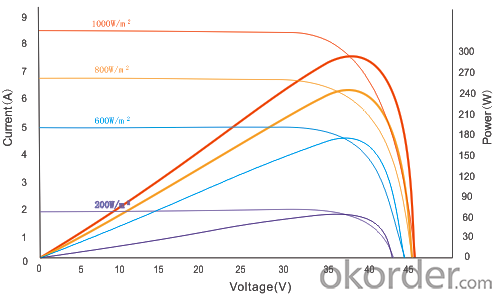
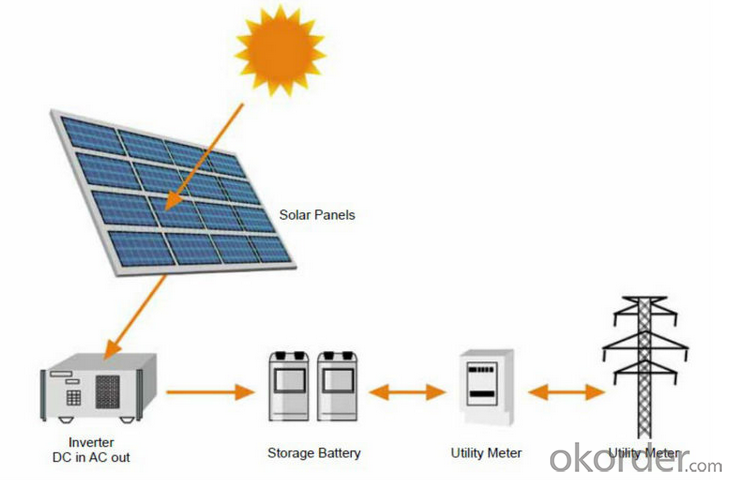
Image
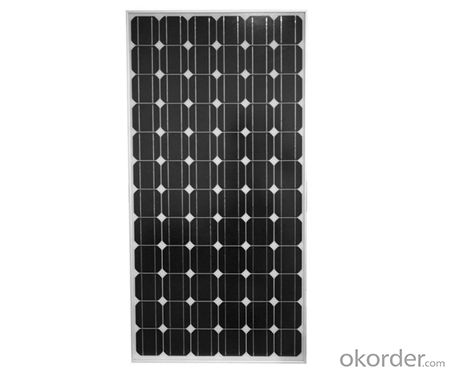
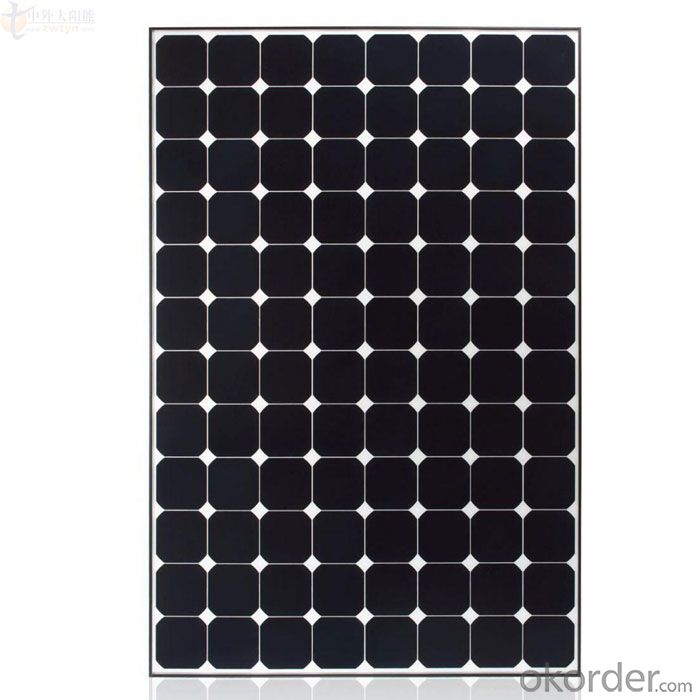
Guarantees
Products Guarantee 12 yrs free from defects in materials and workmanship
Performance Guarantee No less than 90% within 10yrs and no less than 80% within 25yrs
Certificates TUV (IEC61215&IEC61730), VDE(IEC61215&IEC61730), UL, CE
FAQ
1. Q: Do you have your own factory?
A: Yes, we have. Our factory located in Jiangsu province.
2. Q: How can I visit your factory?
A: Before you take off from your country, please let us know. We will show you the way, or arrange time to pick you up if possible.
3. Q: Do you provide free sample?
A: Usually we do not offer free sample
4. Q: Could you print our company LOGO on the nameplate and package?
A: Yes, we can do that.
- Q:I need to build a battery array to use with my solar panels I just bought. I want to be able to store enough energy to be draw from it at night, possibly around the clock. Is there a down side to using the deep cycle battery I bought from autozone and 6 or 7 more just like it, or do I need to get some other battery?
- There are batteries particularly made for solar, such as the Trojan T05-RE . I think the RE stands for renewable energy. A deep cycle battery should work all right, although not quite as well. What you want to do is try out your setup first, with just one battery, and the panels provided. If this is one of those 45 watt kits, you may be surprised at how little energy you actually get from the panels. Increasing the number of batteries won't help, either - that's like getting a larger water tank, when you only have a trickle to fill it. If your goal is really to save money, the most cost-effective solar is the grid-tied type, with no batteries at all. That's what we have, and I've never regretted it.
- Q:Green issues aside, are solar panels worth it, monetarily speaking?I don't mean that my house might be worth more or any of that. All I am asking is this: if I invest in a set of solar panels, will the cost be paid back to me over time? If so, how long will it takegt;Take into account the following:. Currently I pay the electric company around $00 per month2. I use around 400 kilowats of energy per monthI realize that exact numbers are hard to come by, but any opinions are welcome.
- Build okorder
- Q:Can solar panels be used to power a water treatment plant?
- Yes, solar panels can be used to power a water treatment plant. Solar energy can be harnessed to generate electricity, which can then be used to operate the various processes and equipment involved in water treatment. The energy generated by solar panels can be stored in batteries for use during non-sunny periods, ensuring a consistent power supply for the water treatment plant. Additionally, solar power can help reduce the carbon footprint of the water treatment process, making it more environmentally friendly.
- Q:Can solar panels be used in areas with high levels of UV radiation?
- Yes, solar panels can be used in areas with high levels of UV radiation. In fact, solar panels are designed to withstand and harness UV radiation from the sun. However, it is important to note that excessive UV exposure can cause some degradation over time, so proper maintenance and monitoring are necessary to ensure optimal performance and longevity of the solar panels.
- Q:Do solar panels require regular cleaning?
- Yes, solar panels do require regular cleaning to maintain optimal performance. Accumulation of dust, dirt, leaves, bird droppings, and other debris can reduce the efficiency of the panels. Regular cleaning, either by homeowners or professional services, helps ensure maximum sunlight absorption and energy production.
- Q:right now, you would need a suitable number of solar panels just to power house that can take up a lot of real estate. so my question is, is it feasible to create something that absorbs more of the suns energy like a magnet it would suck it up. the point of doing this would be so that we wouldnt need so much space so many panels just to power home for example.i hope thats coherent.
- we are near the edge of what is physically possible for solar power. You only get so many photons per area you know...and much of this is lost in entropy. Solar panels today are over 80% as efficient as what could ever be theoretically possible. No you will never get an easy solution to the land problem. lol what invisible talker suggests about using a black hole i suppose could be a way to increase the photons per area...but you would get much mroe power by using the tidal forces produced by a black hole than solar power heh...not to mention your panels will get sucked in...and whatever energy they produce wont be able to escape the black hole and power anything outside.
- Q:How much roof space is needed for solar panels?
- The amount of roof space needed for solar panels varies depending on various factors such as the size and efficiency of the panels, the energy requirements of the building, and the geographical location. However, on average, a typical residential solar panel system requires approximately 100 to 400 square feet of roof space.
- Q:Can solar panels be installed on a data center or technology facility?
- Yes, solar panels can be installed on a data center or technology facility. In fact, many data centers and technology facilities are increasingly adopting solar power as a way to reduce their carbon footprint and lower energy costs. Solar panels can be installed on the rooftops or open spaces surrounding these facilities to generate clean, renewable energy that can be used to power their operations. Additionally, the excess energy produced by the solar panels can even be fed back into the grid, providing an additional source of revenue for the facility.
- Q:How long does it take a 5 watt, 2 volt solar panel to charge a 2 volt R.V. battery?
- It is related to the size and capacity of your battery.
- Q:a fiber optic network could distribute solar energy from warm states to the rest of the country. Using a Federally created program,the energy would be used through a trust program to benefit all of our citizens equally. It would create thousands of jobs and help us with our dependence on foriegn oil supplies. This is no different than work programs created by the Feds during the 930's depression era.
- Claire's argument doesn't make much sense to me either. First; Claire is talking about the second law ('you can only lose or break even'), not the third law ('you can't get to absolute zero'). Easily confused, but not that important! Putting a solar panel down _can_ increase the heat absorbed by Earth. Everything has an 'albedo' (the proportion of incoming light it reflects), and Earth's average albedo is about 0.3 (ie 30% of incoming light is reflected, most of which leaves the atmosphere straight away). By putting a 0.05 albedo solar panel down on a 0.3 albedo surface, you increase the amount of sunlight that is absorbed by Earth and therefore contribute to warming. This heat is re-radiated at the Earth's temperature, in the right wavelength range to be absorbed by greenhouse gases too. If you put a panel down on equatorial ocean, or a black roof, however, there is pretty much no effect (since the albedo change is small). Also, the heating effect only lasts as long as the panel is there. Most panels are estimated to last 50 years, meanwhile CO2 has a mean lifetime of 00+ years. I did some maths and found that the 00 year averaged change in radiative forcing for solar panels was negative compared to the UK electric grid, because the reduction in CO2 emissions has a larger effect than the change in albedo. If I have spare time tomorrow I'll redo the calculations and share them. The albedo change has to be considered though!
1. Manufacturer Overview |
|
|---|---|
| Location | |
| Year Established | |
| Annual Output Value | |
| Main Markets | |
| Company Certifications | |
2. Manufacturer Certificates |
|
|---|---|
| a) Certification Name | |
| Range | |
| Reference | |
| Validity Period | |
3. Manufacturer Capability |
|
|---|---|
| a)Trade Capacity | |
| Nearest Port | |
| Export Percentage | |
| No.of Employees in Trade Department | |
| Language Spoken: | |
| b)Factory Information | |
| Factory Size: | |
| No. of Production Lines | |
| Contract Manufacturing | |
| Product Price Range | |
Send your message to us
265W CNBM Solar Monocrystalline Series (250W—270W)
- Loading Port:
- China main port
- Payment Terms:
- TT OR LC
- Min Order Qty:
- 10000 watt
- Supply Capability:
- 500000 watt/month
OKorder Service Pledge
OKorder Financial Service
Similar products
New products
Hot products
Related keywords
